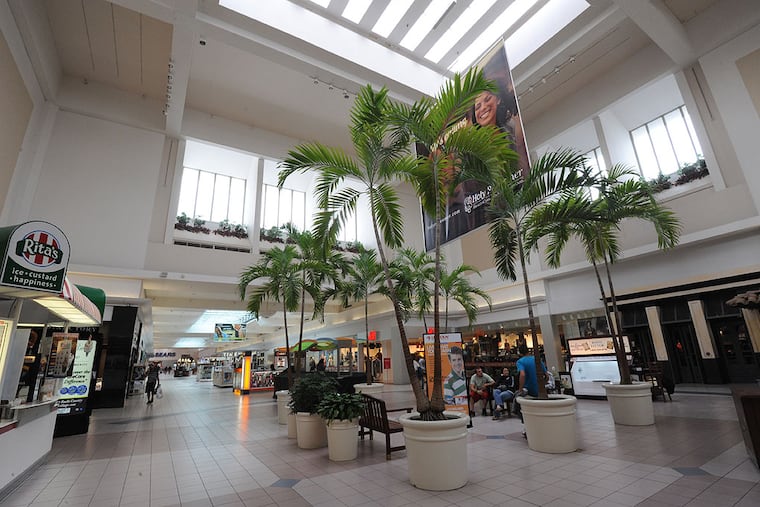Struggling Neshaminy Mall is put up for sale
Half of the Bensalem shopping center’s stores are vacant

With over half of its stores vacant, the Neshaminy Mall is up for sale.
The Bensalem shopping center has struggled to retain tenants in recent years, accelerated by the departure of the Macy’s department store in 2017.
The mall’s owner, Brookfield Properties, has yet to find a buyer for the 1 million-square-foot property. They declined to comment Friday.
Douglas Green, who represents a potential buyer as principal at the commercial real estate agency MSC’s Philadelphia office, said malls like Neshaminy are struggling to compete amid changing shopping practices.
“The type of demand that exists in the market does not meet the type of supply that exists at the mall,” said Green, who did not disclose the potential buyer. “You’re seeing this with malls all over the region, and all over the country.”
Brick-and-mortar stores nationwide are grappling with competition from a flourishing online shopping economy and changing consumer habits that negatively impact traditional malls.
Consumer demand for in-person shopping has transitioned to smaller, more convenient shopping centers in recent years, promenades such as Suburban Square that offer high-end stores alongside daily necessities like groceries, Green said.
That’s coupled with a drop in foot traffic that coincided with the departure of “anchor stores” like Macy’s from traditional malls.
Today Neshaminy Mall features two restaurants, an AMC movie theater, and over 40 retail locations, according to leasing material on Brookfield Properties’ website.
But signs of trouble began in 2017, when Macy’s left the 200,000-square-foot space it had occupied since it first opened as Strawbridge’s in 1968. It was part of the historic department store’s shuttering of 125 locations in recent years.
Green says the “common denominator” for struggling malls are the closures of these behemoths, which traditionally drew large concentrations of customers who would then meander into the mall’s interior to eat and shop.
After the pandemic, Green said, consumers have increasingly favored local shopping centers, which often don’t require a trip on the highway, parking in a large lot, and navigating a large space to find a specific shop.
“They’re easy to get in and out, they’re easy to park, they’re closer to home, and you’re probably going there anyway because that’s where your grocery store is in many cases,” he said.
Still, Green still sees value in traditional shopping malls. To stay afloat, many have opened their doors to mixed-use redevelopment in recent years; that’s opened up the option for malls to become places to live, work, and play by adding residential units, office space, and hands-on entertainment. Other tenants, such as massage parlors, veterinarians, and physical therapists, have enjoyed success in traditional malls, Green added.
At Neshaminy Mall, that trend came about last year when the regional chain Fusion Gyms announced that it planned to transform the boarded up Macy’s space into a sprawling, state-of-the-art fitness center, complete with a restaurant, boxing rings, pool, and nine-hole golf course.
To compete with lifestyle center shopping and last year’s $1.1 trillion dollar e-commerce industry, malls will have to consider alternative uses. There are around 700 operating malls across the country, down from 2,500 in the 1980s, according to industry estimates. Some experts expect the current number to shrink even further in the coming decade.